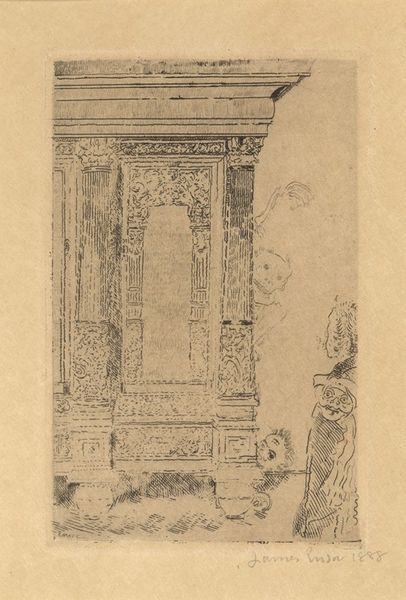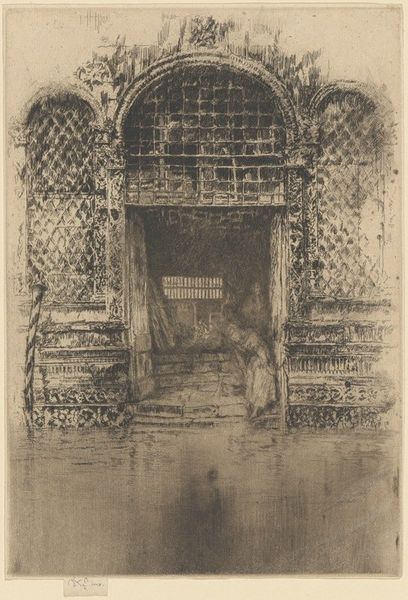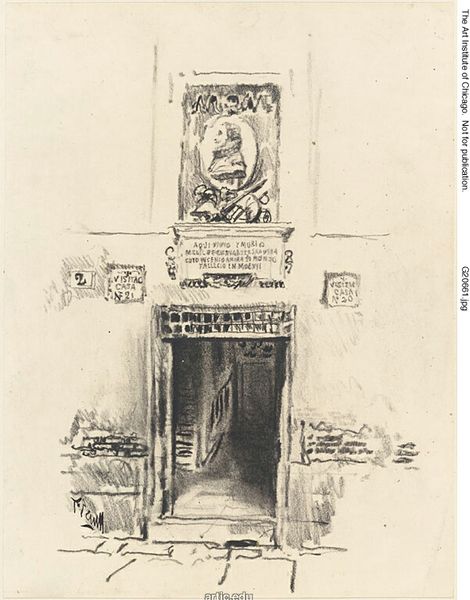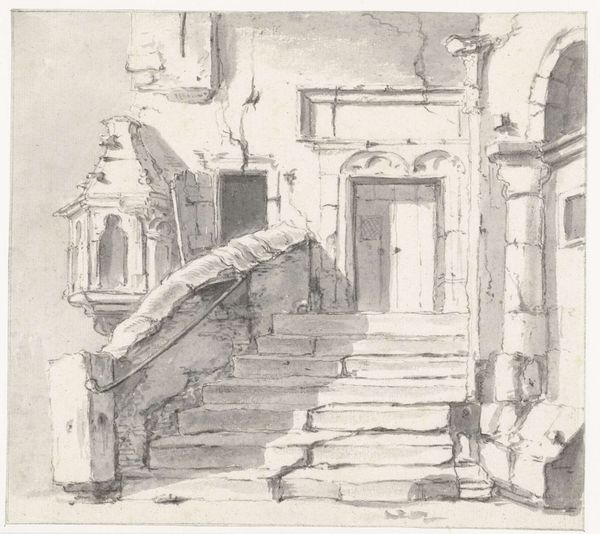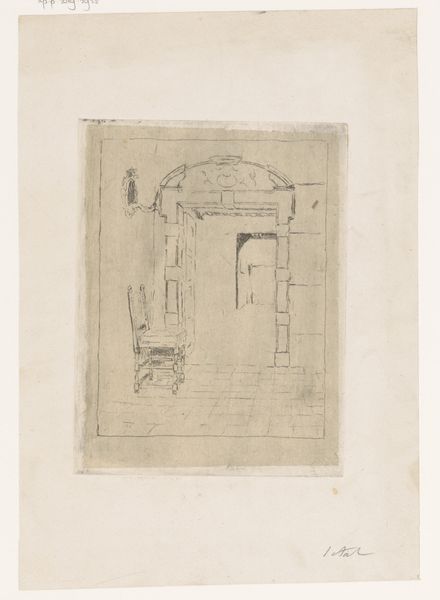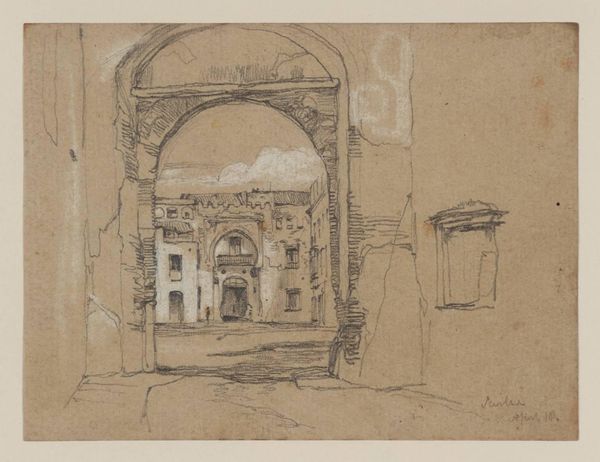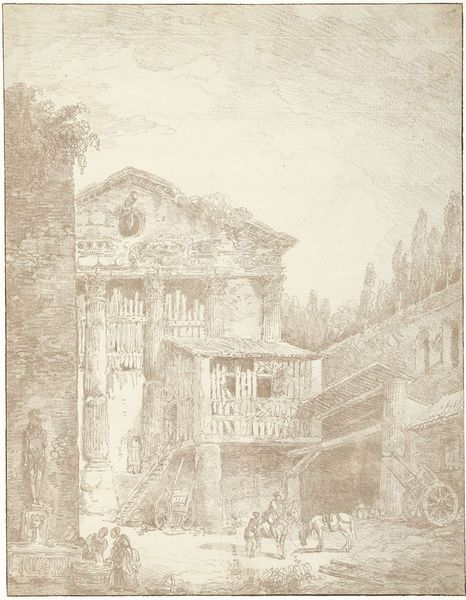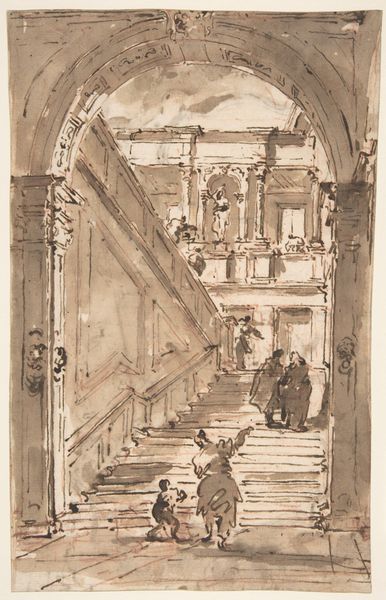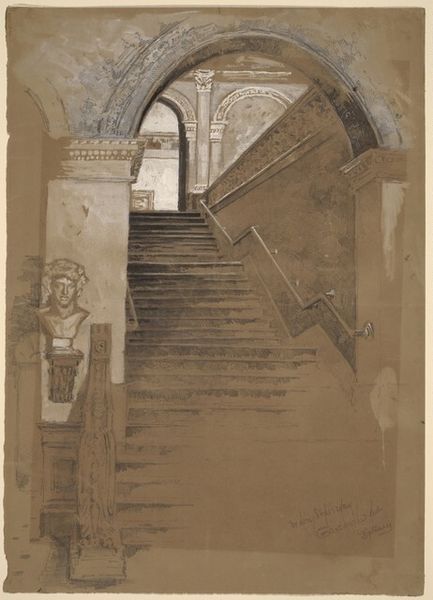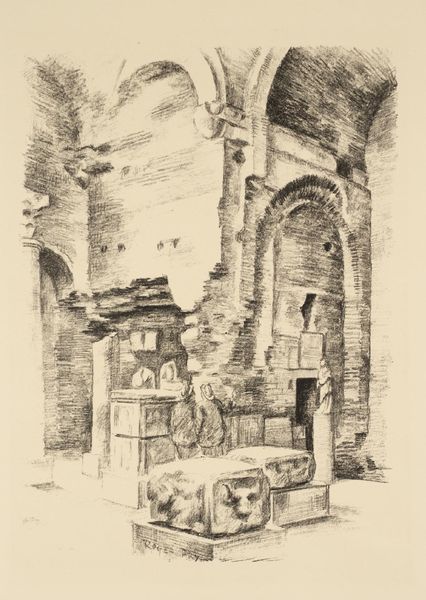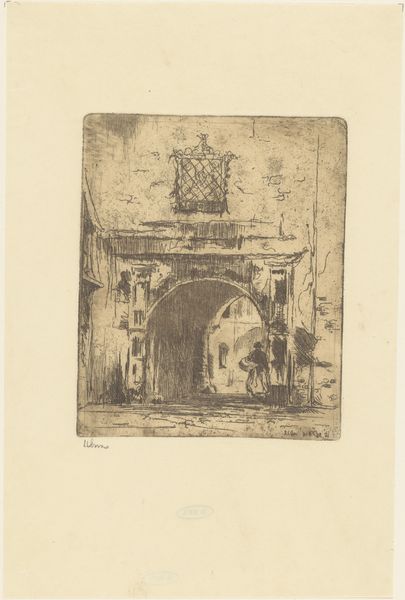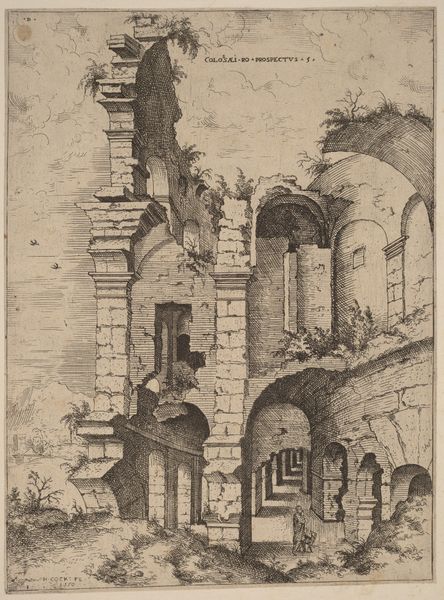
Copyright: Public Domain: Artvee
Here is a drawing of San Giovanni Apostolo et Evangelistae by James Abbott McNeill Whistler. Notice how the portal is framed by pillars, reminiscent of classical architecture. This architectural element can be traced back to ancient temples, where columns served not only as structural supports but also as symbols of strength and stability. The archway above the door is a motif that appears in various cultures throughout history, from Roman triumphal arches to Gothic cathedrals. Arches serve as transitional spaces, inviting the viewer to move from one realm to another. This motif evolved, appearing in sacred architecture across different religions. The arrangement of vertical columns echoes a primal, subconscious connection to the natural world, mirroring the upright stance of trees. This reflects our collective memory of seeking shelter and safety in structured spaces. The portal in Whistler's drawing is more than just an architectural feature; it is a symbol of cultural memory and historical continuity. It resonates with our subconscious understanding of space and invites us to contemplate the cyclical progression of architectural motifs, as they resurface, evolve, and acquire new meanings across time.
Comments
No comments
Be the first to comment and join the conversation on the ultimate creative platform.

